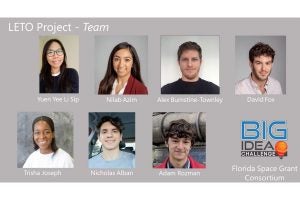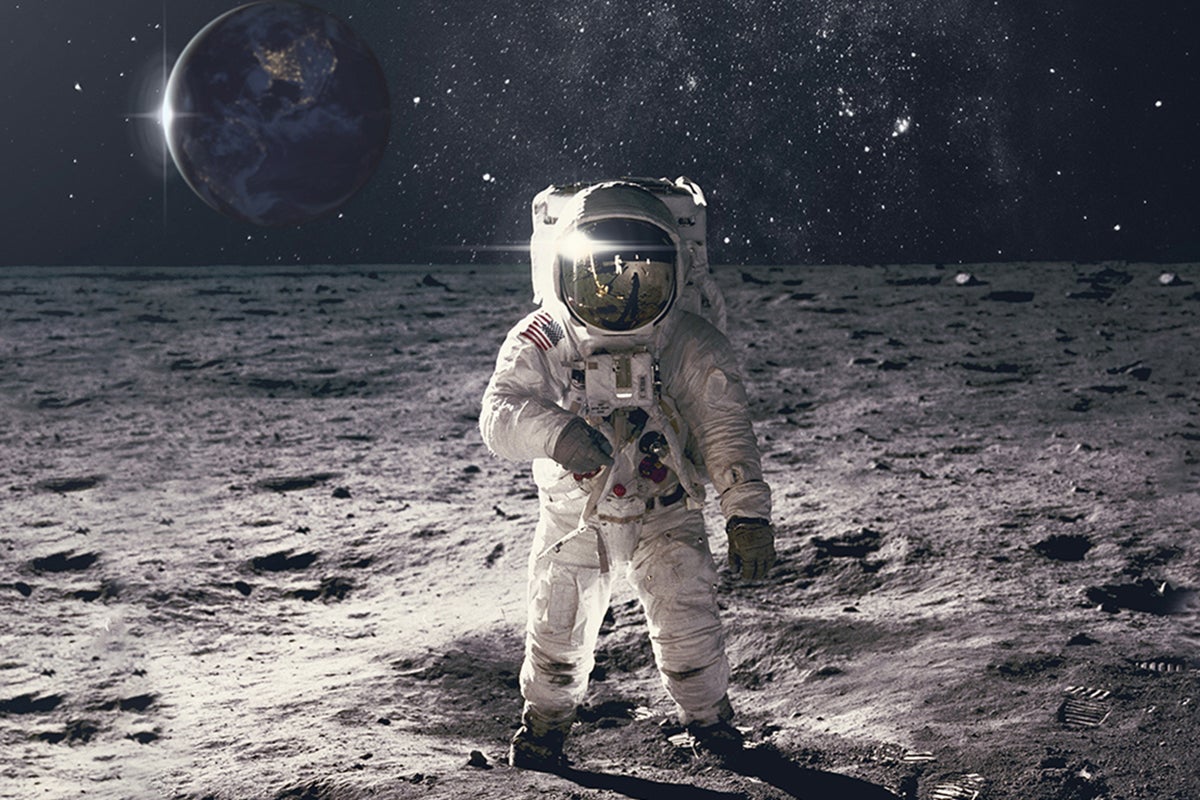NASA has selected a University of Central Florida nanotechnology team as one of seven university groups from around the country tasked with developing ways to stop the negative effects of moon dust during lunar missions.
The selection, which was announced recently, is part of a year-long initiative known as the Breakthrough, Innovative and Game-changing (BIG) Idea Challenge, in which undergraduate and graduate students have the opportunity to design, build and test new technologies that mitigate dust or are dust tolerant, based on proposals they submitted to NASA.
The UCF team’s proposal is a design for a new type of material to cover the exterior of spacesuits.

The material’s nanostructure design is based on how honeybees and other pollinators can manipulate tiny pollen using both microstructures and electric fields. The researchers are also incorporating techniques from the Japanese art of paper-folding, origami, to increase the material’s range of motion and also longevity by reducing the stress the material would face through repetitive movements.
“This research is trying to tackle one of the unsolved problems from the Apollo missions — lunar dust,” says David Fox, a doctoral candidate in UCF’s Department of Chemistry who is helping lead the UCF team.
“This tiny dust clings to everything through static electricity and ends up coating the astronaut’s spacesuits and equipment,” he says. “The health dangers of this dust, and the damage to astronauts, their spacesuits and their equipment, could be detrimental to the upcoming Artemis missions.”

Fox says that since the Artemis lunar missions will be longer than the Apollo missions, they will involve astronauts living and working on the moon.
“Our research aims to remove dust from spacesuits easily and before it has a chance to enter the lunar habitats where they will be stationed,” he says.
The researchers got their idea for the pollinator-inspired design by thinking about how nature deals with small particles. They began looking at origami designs when considering how to decrease the amount of stress the material would face from repeated movements and the cold temperatures of the moon.
The seven selected teams, which includes the California Institute of Technology, the Colorado School of Mines and the Georgia Institute of Technology, will receive funding from NASA to develop their designs and will work through 2021 to build, test, and present them to NASA.
The UCF team’s proposal is titled Lunar Dust Mitigating Electrostatic micro-Textured Overlay, or LETO. The team includes Nilab Azim ’20MS, doctoral candidate in the Department of Chemistry; Yuen Yee Li Sip ’17 ’19MS, doctoral student in the Department of Materials Science and Engineering; Alex Burnstine-Townley ’16, doctoral student in the Department of Chemistry; Trisha Joseph ’20, a recent graduate with her bachelor’s in physics; Adam Rozman, an undergraduate researcher in the Department of Mechanical and Aerospace Engineering; Nicholas Alban, undergraduate researcher in the Department of Electrical and Computer Engineering; and Lei Zhai, director of UCF’s NanoScience Technology Center and a UCF Department of Chemistry professor, as the team’s advisor.
They are also working with leading Dutch nanoimprint and microreplication technology company Morphotonics to help produce the material and get the innovation, if successful, rolled out to industrial-scale manufacturing.
The challenge is supported by NASA’s Space Technology Mission Directorate’s Game Changing Development Program’s efforts to mature innovative and high-impact capabilities and technologies for use in future NASA missions.
The team’s next steps will be to assemble and test its designs after further consultation with NASA’s BIG Idea Challenge team.
Zhai received his doctorate in chemistry from Carnegie Mellon University. He joined UCF’s NanoScience Technology Center and Department of Chemistry, part of UCF’s College of Sciences, in 2005.




